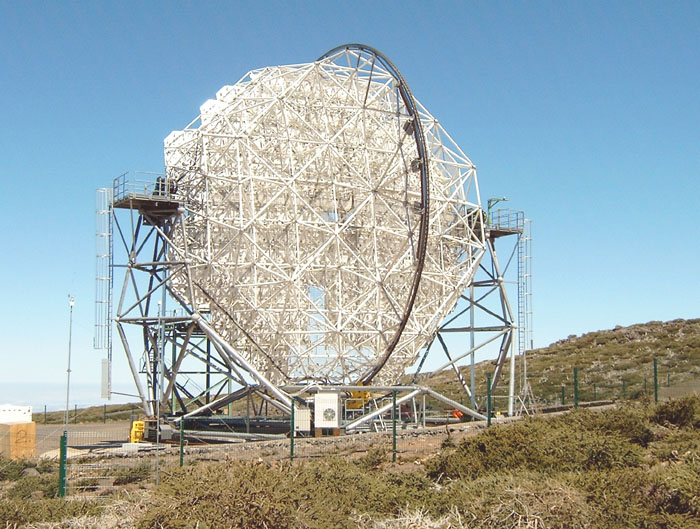- Location: La Palma, Spain
- Completion: 2001
- Client: Max Planck Institute of Physics, Munich
- Scope of Work: Substructure of the 17 m telescope
- Cladding: Diamond-cut aluminium refractor facets
- Type of Structure: MERO space frame structure
On the Canary Island of La Palma, scientists from theMax Planck Institute of Physics in Munich (Germany) have erected a new type of telescope for the study of space. With a diameter of 17 m, this telescope is the greatest of its kind in the world.
It consists of 1,000 diamond-cut aluminium refractor facets, each sized 50 x 50 cm. Four refractor facets are set on each selectively controllable panel.
In close cooperation with the Max Planck Institute of Physics, MERO developed the ultra-light space frame structure of MERO ball nodes and beams made of carbon fibre material supporting the refractor. The four layer space frame structure has a total height of approx. 4,4 m.
With a grid of 1.0 x 1.0 m, the top layer of the space frame system corresponds to the geometrical dimensions of the refractor panels. During the fabrication of the beams, the cones were cemented to the ends of the carbon tubes in a special process. Numerous tests were performed in the MERO laboratories in order to study the load bearing performance of the carbon beams and bonded joints.
Scientists hope that the MAGIC telescope will give them an opportunity to study the gamma radiation originating from astronomical phenomena like supernovae or black holes. Besides the University of Wuerzburg, two other German institutions, the University of Siegen and the Max Planck Institute of Physics, Munich, have cooperated on this great feat of technology.







